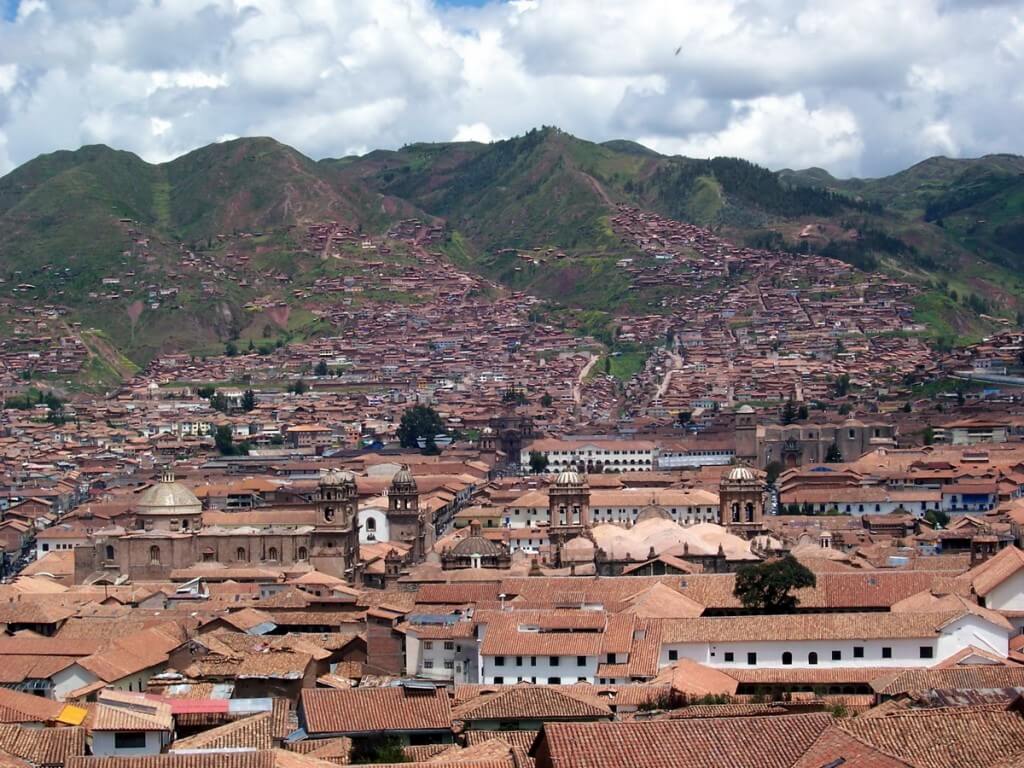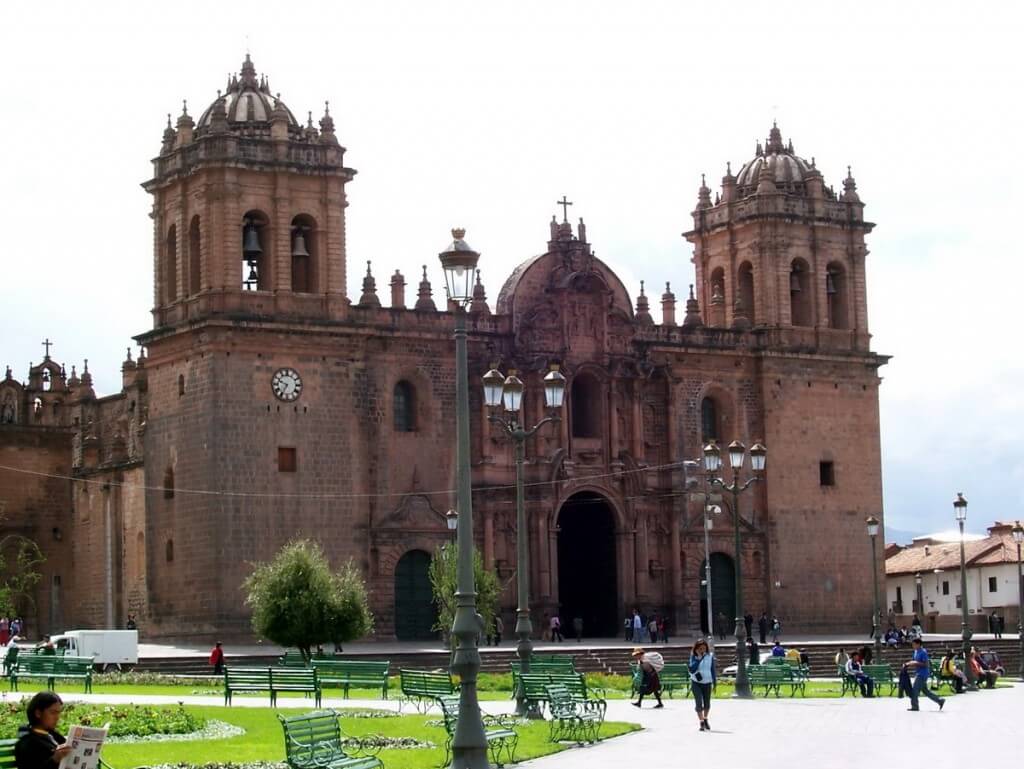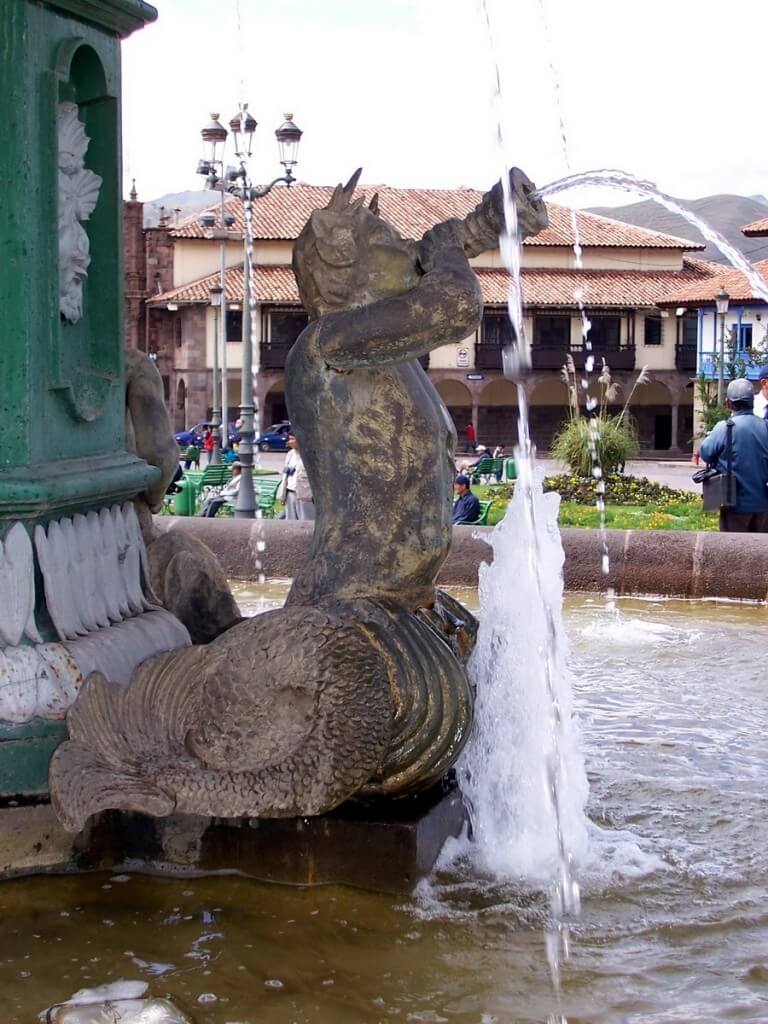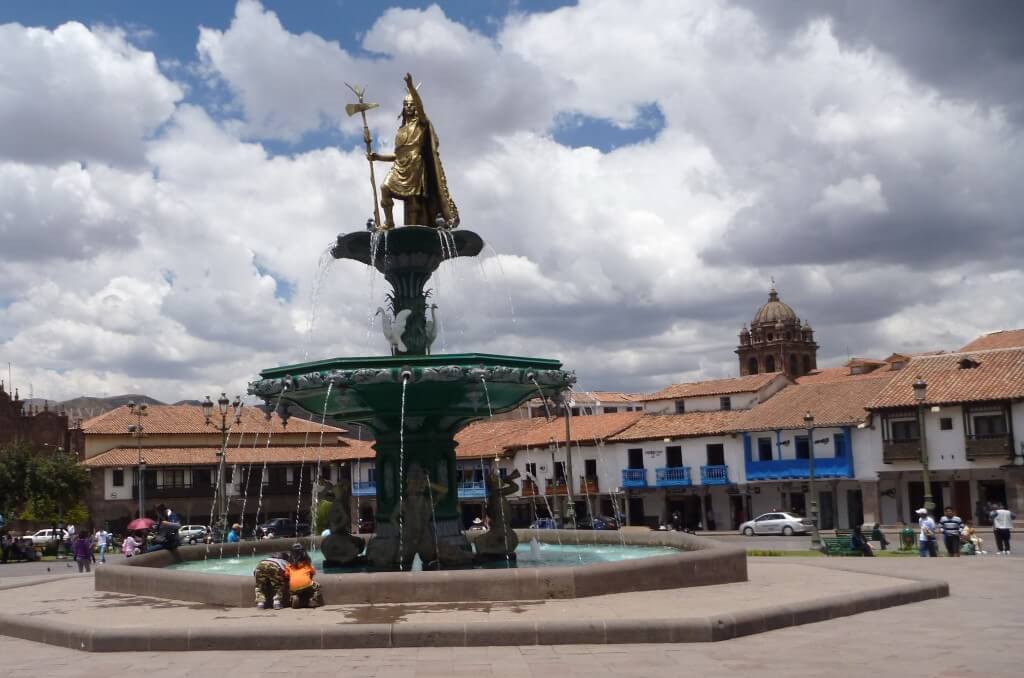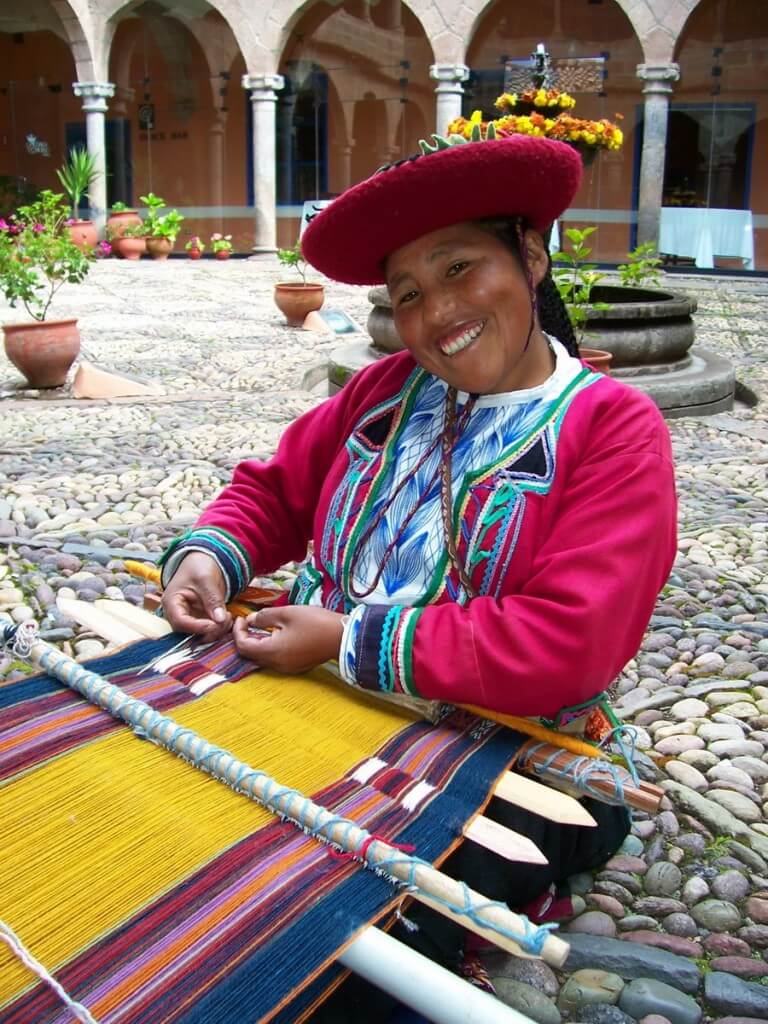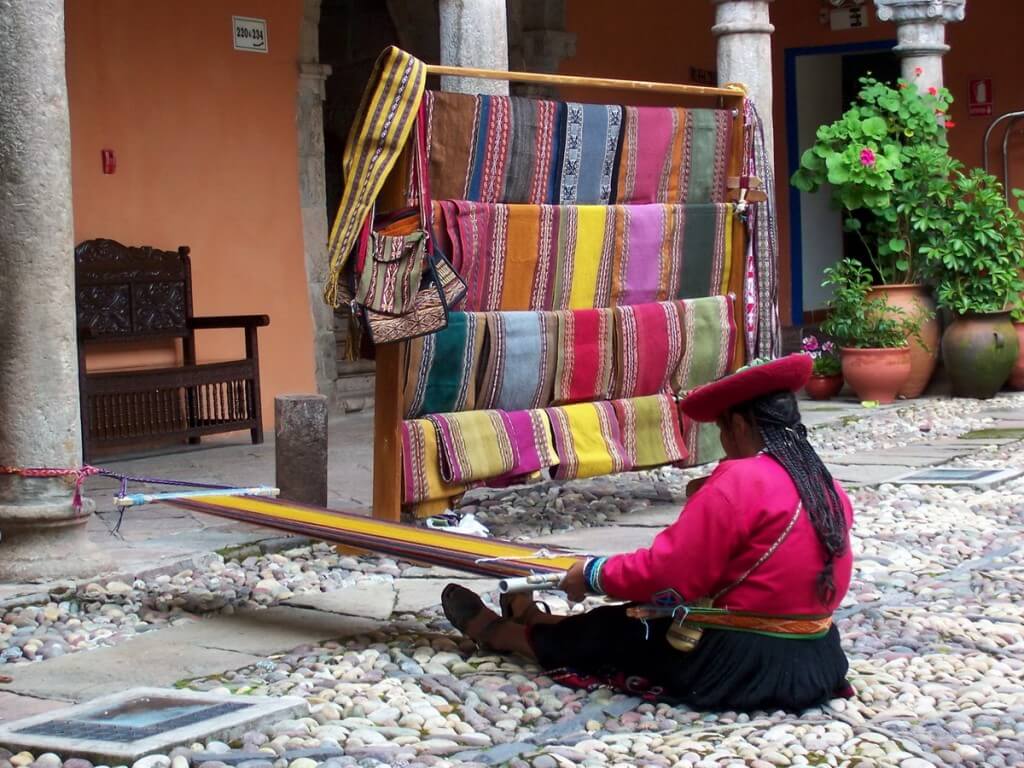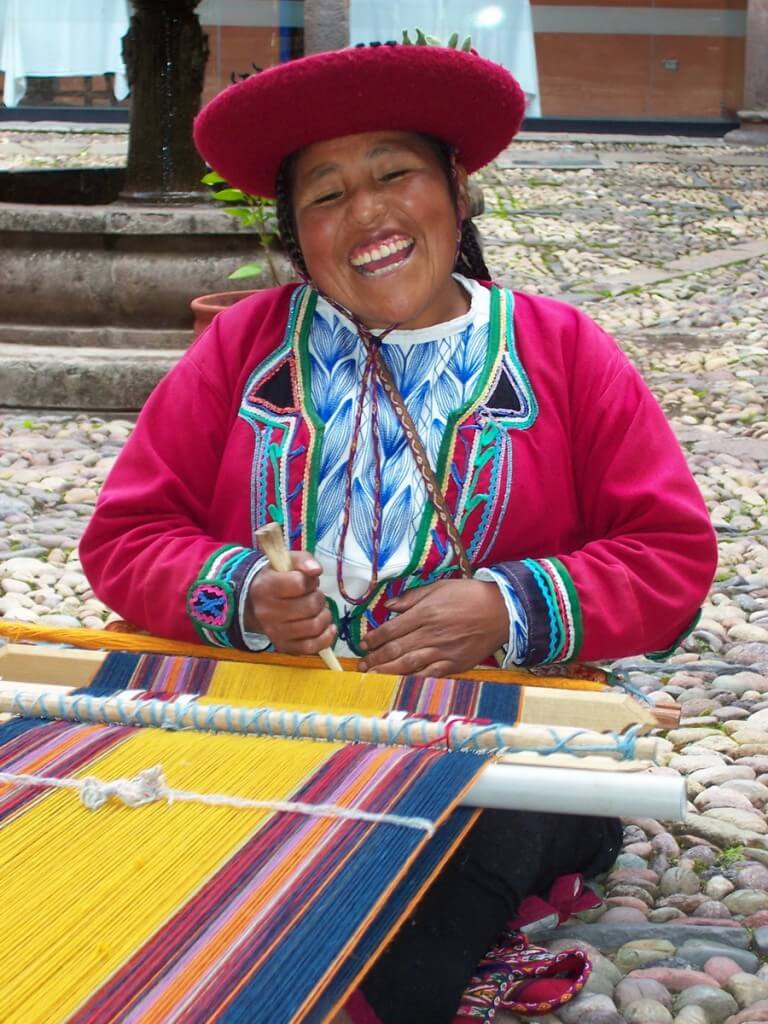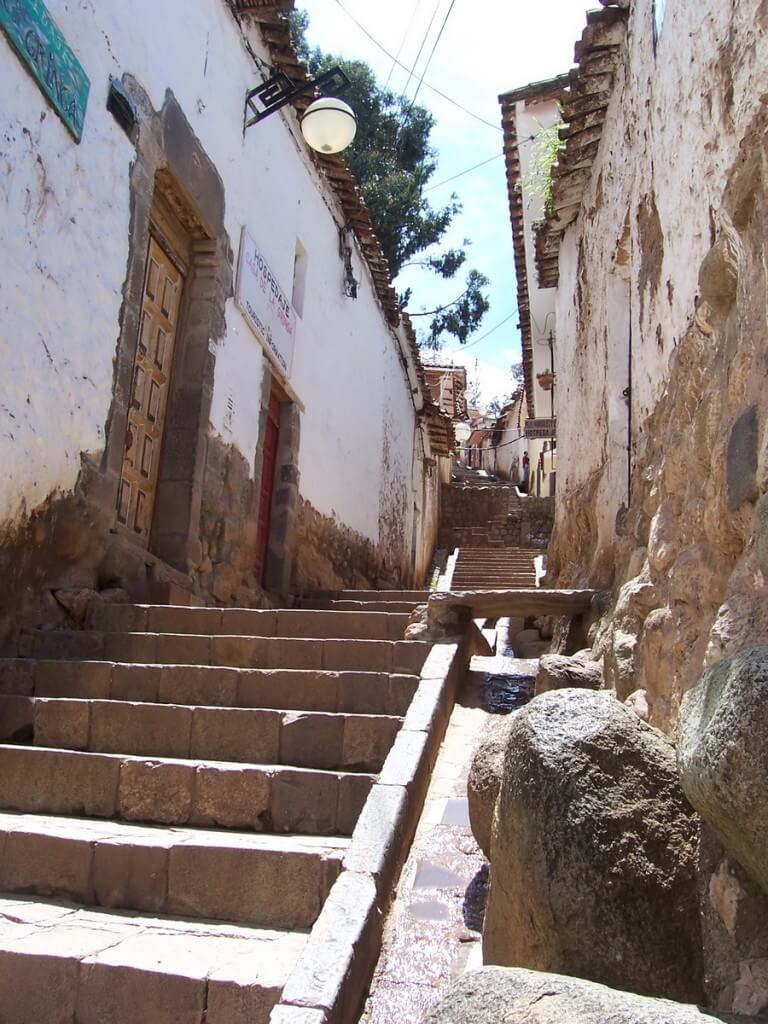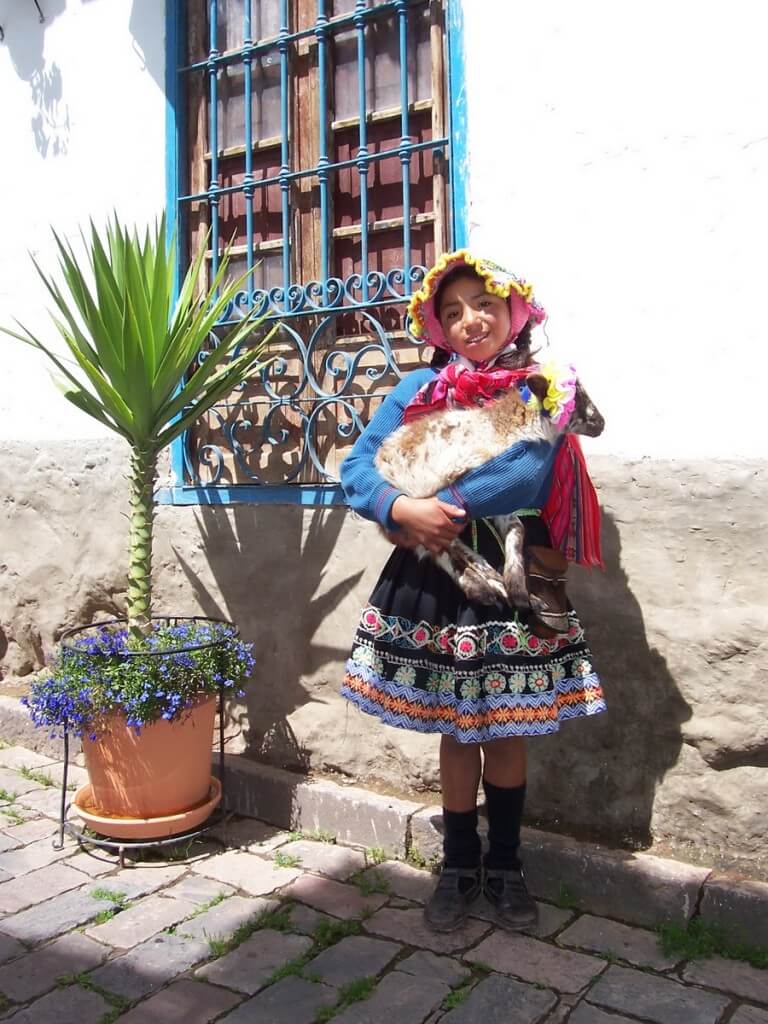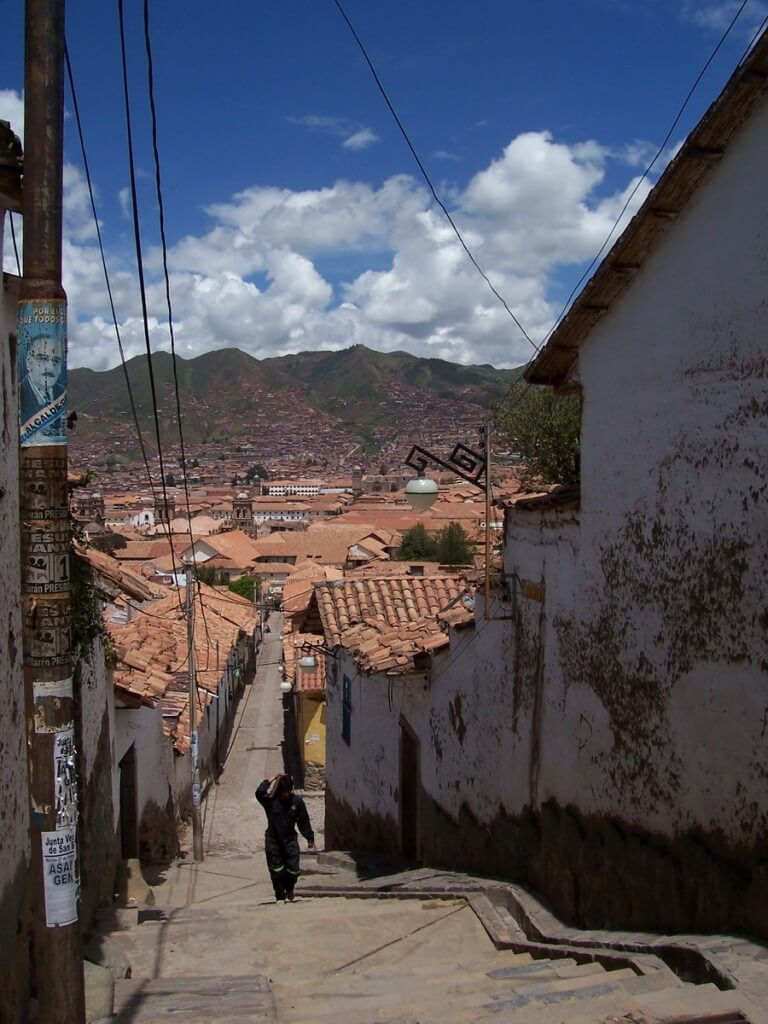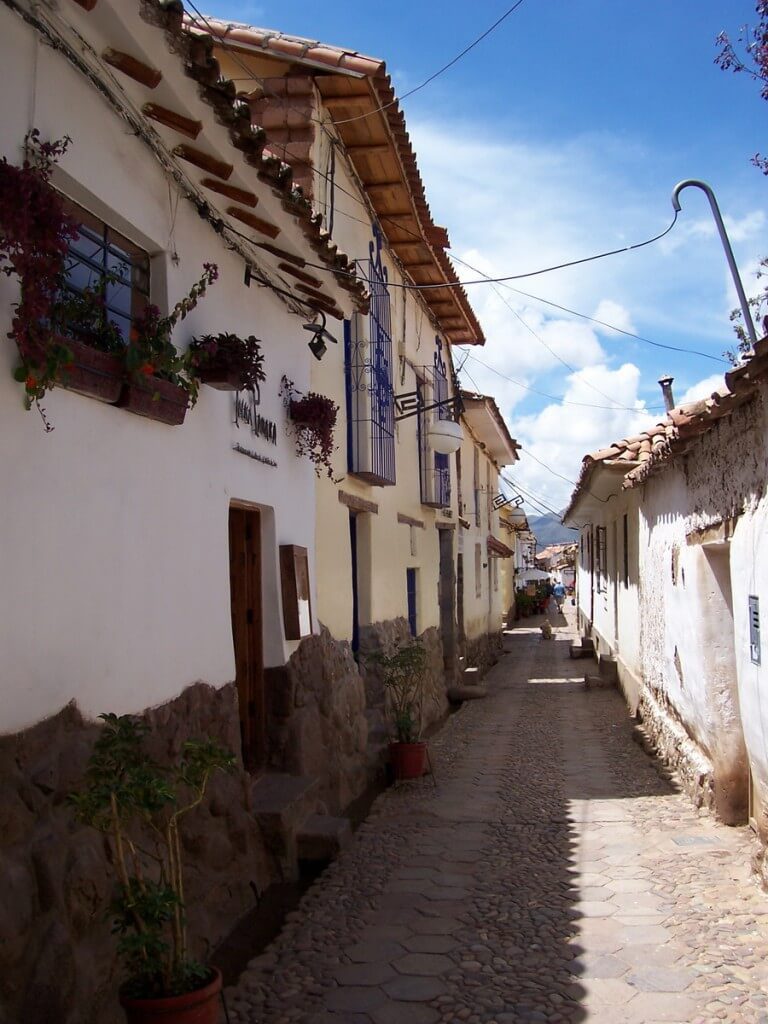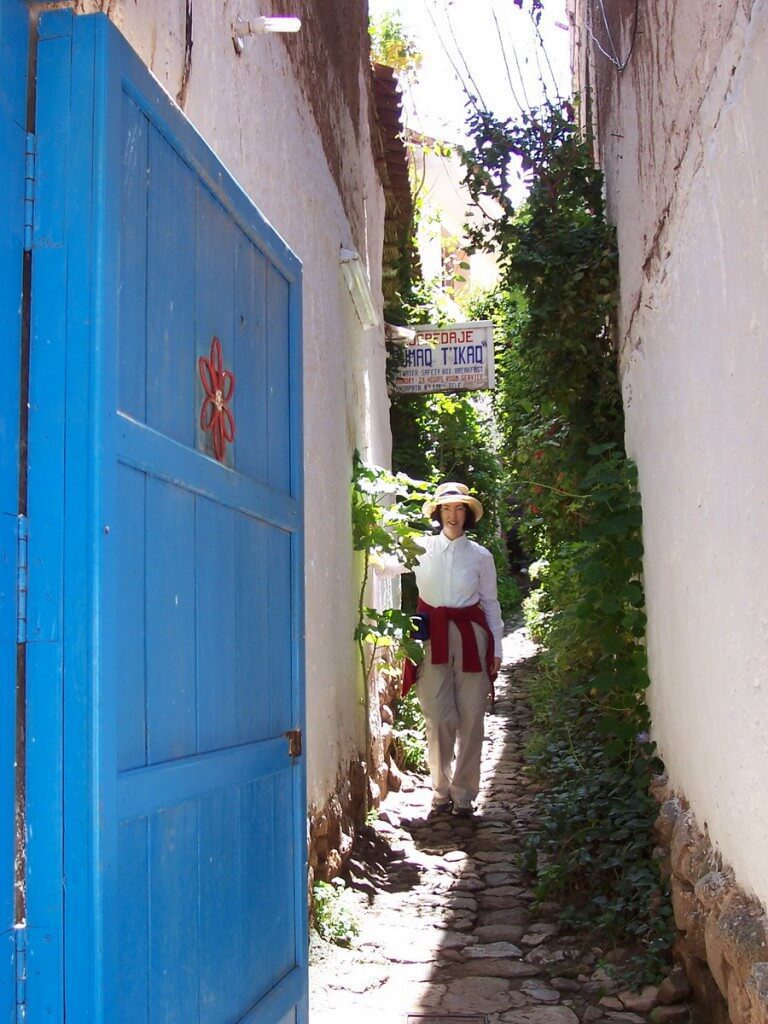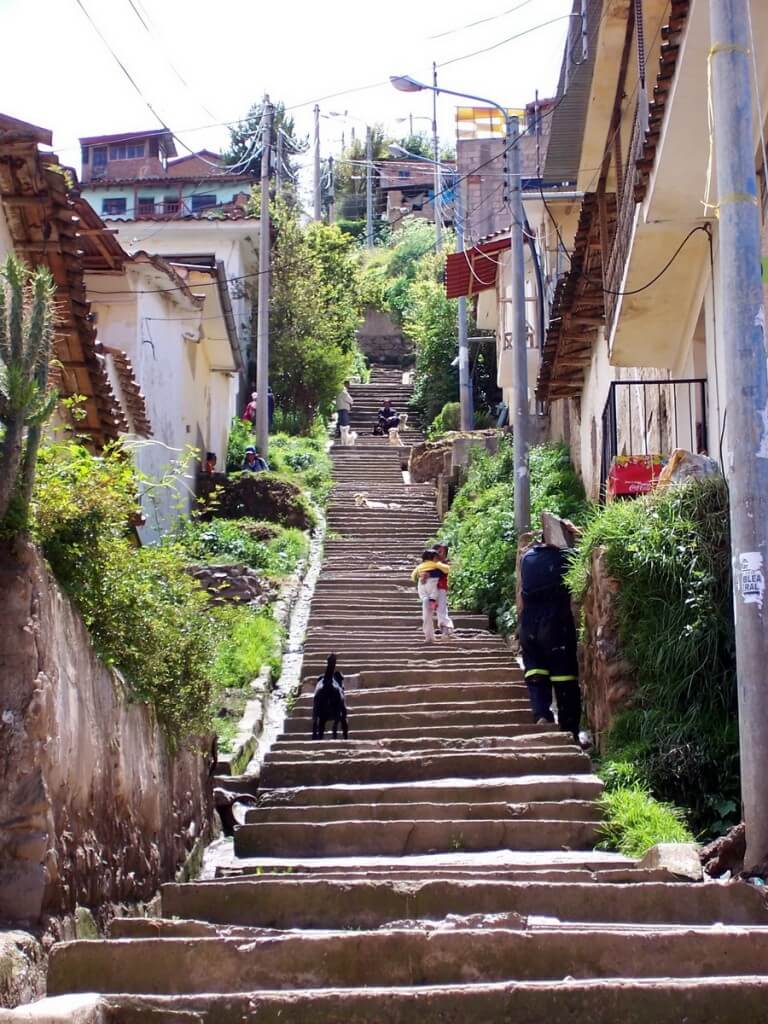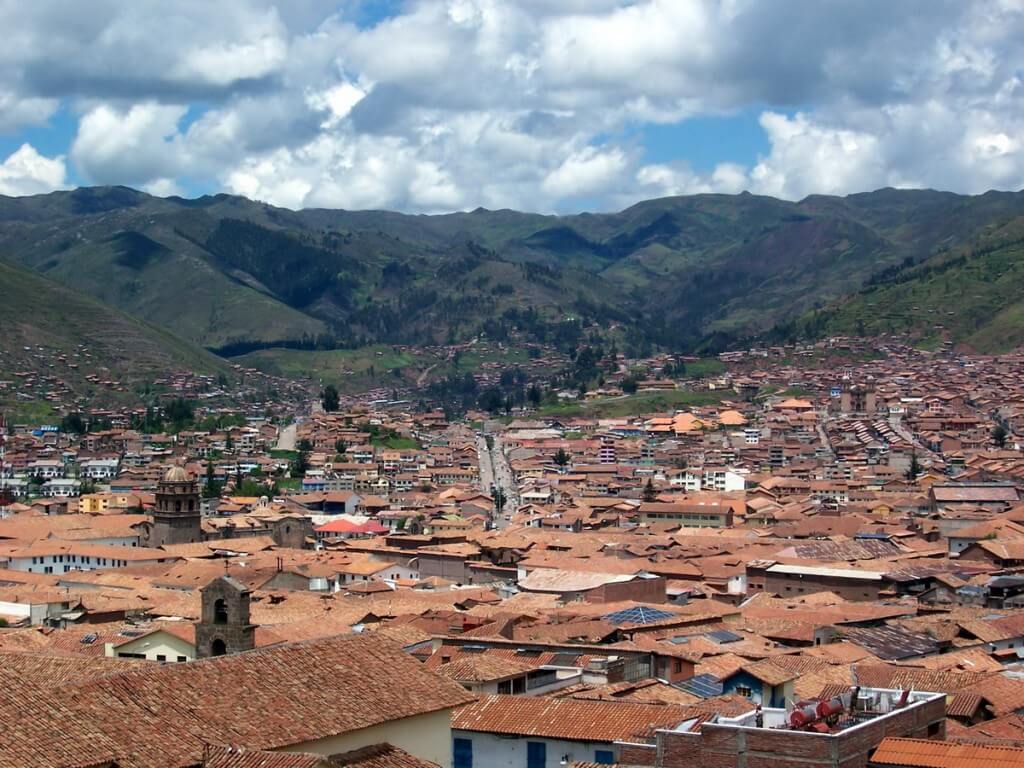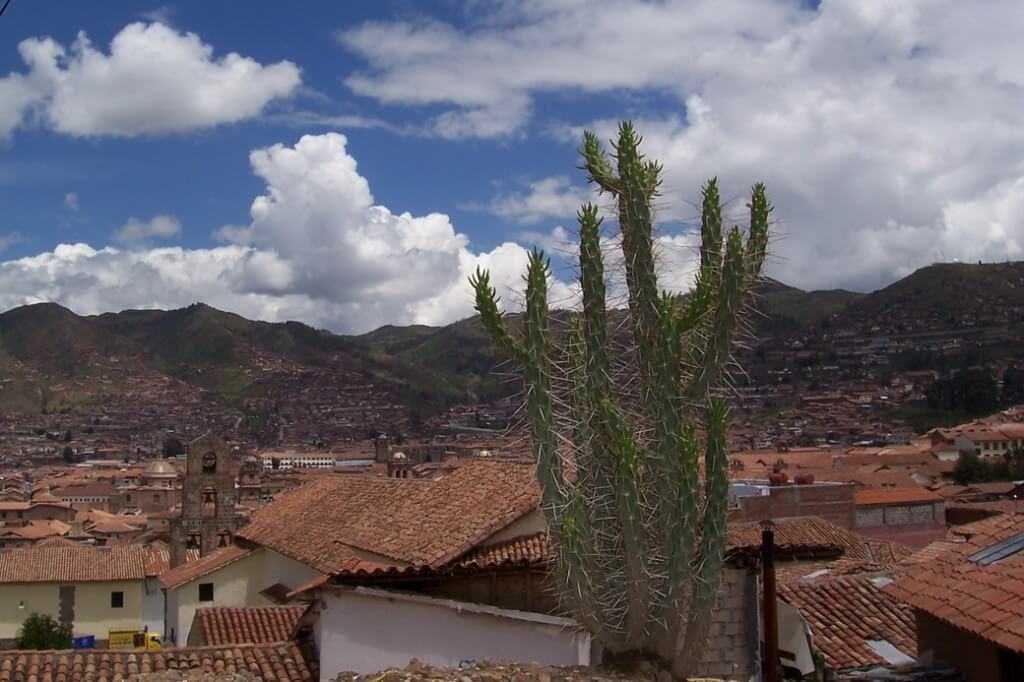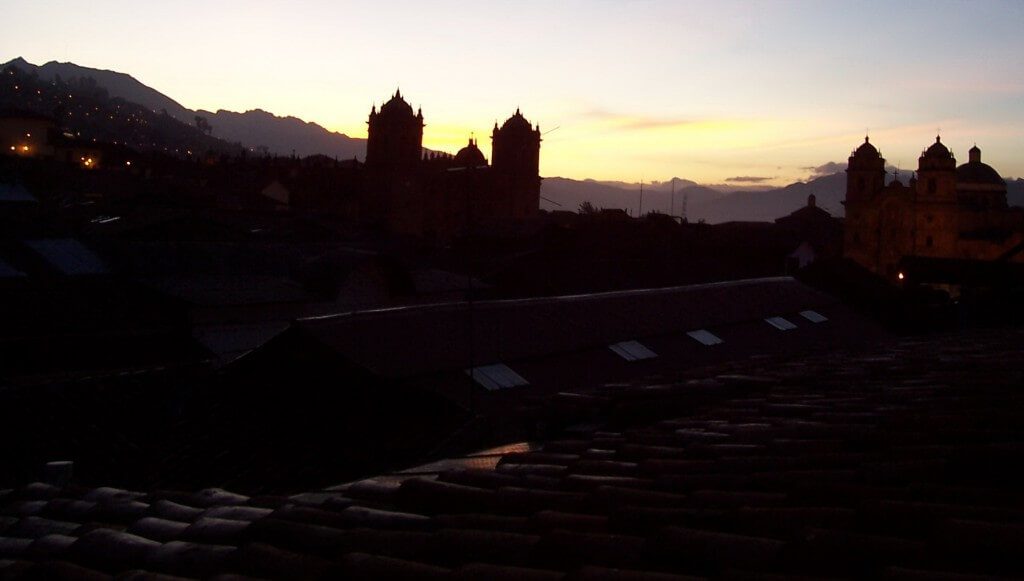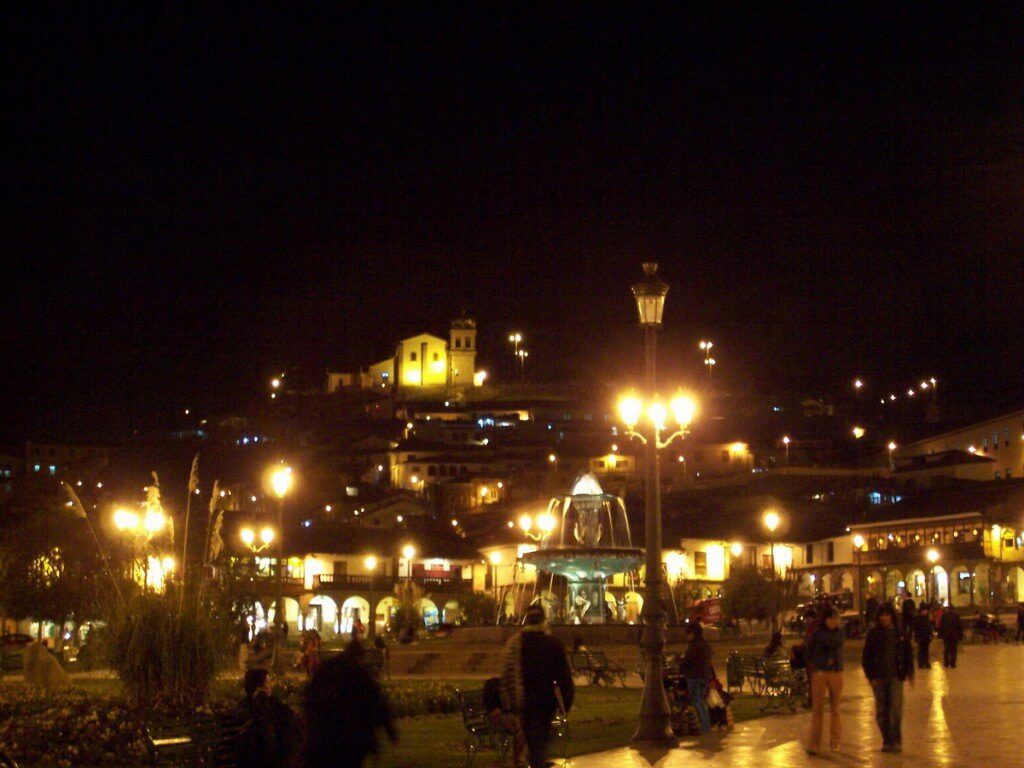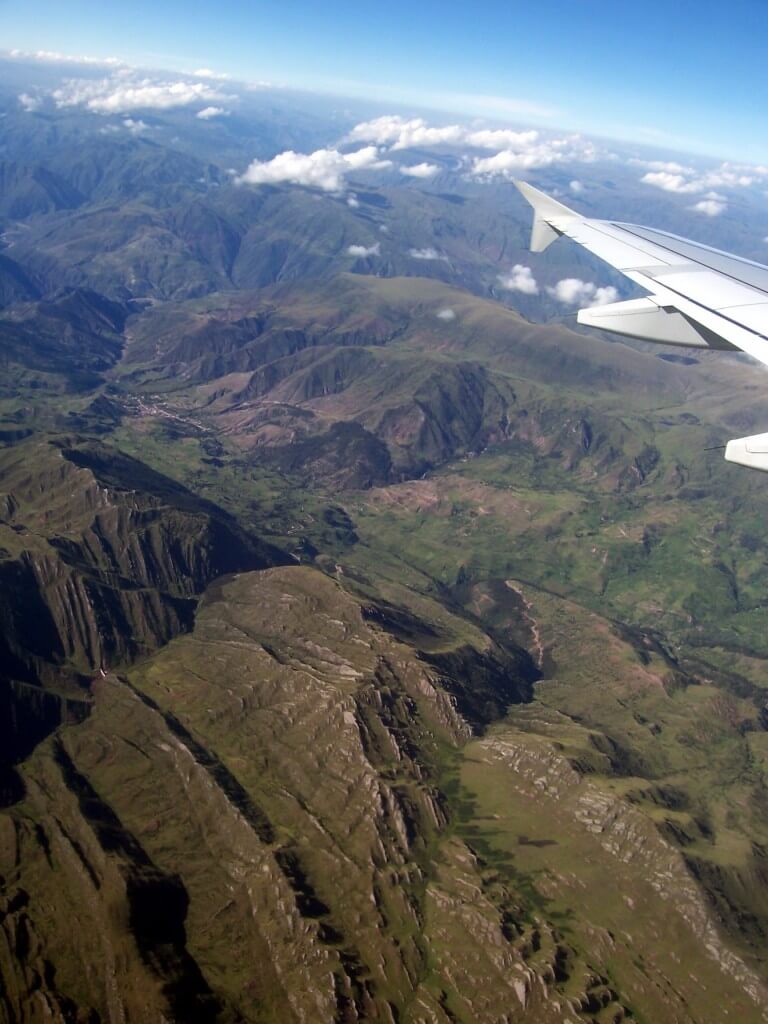Our Tour of Cusco the former capital of the Inca Empire
After finishing our adventure into the Amazon, Bob and I flew back to Cusco, the former Inca capital in Peru. After getting checked into our hotel, we walked over to the Plaza de Armas, which is featured in the centre of this photo. This square, seen here surrounded by various different church steeples, was once the hub of the Inca Empire. It was here in this mountain valley, in the exact middle of Plaza de Armas, that the Inca people believed that the centre of the universe and all power on earth was focused. Given the success of their Empire before the Spanish arrived, it’s not hard to understand why they believed that.
On one side of Plaza de Armas is this Roman Catholic Cathedral of Santo Domingo. This cathedral is built upon the ruins of Koricancha (The Temple of the Sun). When the Spanish invaders came here in 1533, they found 700 solid gold sheets weighing more than four pounds apiece lining the walls of Koricancha. After the Spanish Empire defeated the Inca Empire, the Spanish built this Cathedral on top of Koricancha (The Temple of the Sun).
The Church of la Compania de Jesus is also located along the edge of Plaza de Armas. Bob and I took a tour inside and marveled at the beautiful walls, but unfortunately, no picture taking is allowed. This church, like the Cathedral of Santo Domingo, was also built upon the ruins of the Inca Empire. In this case, the Roman Catholic Church of la Compania was built upon the ruins of the Inca palace of Huayna Cápac.
Throughout the city of Cusco, many sections of walls and foundations of the former Inca Empire remain. Many of these walls have been exposed to public viewing as a direct result of earthquakes that have occurred here in the past 100 years. Following a massive earthquake in the 1950’s, decisions were made to leave the Inca ruins exposed to public view and to uncover and expose more of them.
In one laneway, the section of exposed wall featured a stone that actually has 12 different sides. I think this really shows us how skilled the Inca masons were at cutting and fitting the walls together. Today, with all our modern tools, we most certainly could replicate this wall, but it would be no easy task.
On the right side of the Plaza de Armas square is this water fountain supporting a “Statue to Pachacuti”. Pachacuti is credited with having created the Inca Empire here in Cusco. It is also believed that he had Machu Picchu built as his own personal estate. This square is not only where the Inca Empire began, it is also where it ended. On May 18, 1781, Tupac Amaru II, the leader of an indigenous uprising against the Spanish in Peru, was forced to watch the execution of his wife and family in this square before being tortured and put to death himself.
Tupac Amaru II is credited with inspiring the fight for Peru’s independence from Spain in 1821. He is also considered the driving force behind efforts to bring about the fight for indigenous rights in Peru.
Today, decades after the end of Spanish rule, Peru has a very large indigenous population. As Bob and I learned firsthand, many of these Indigenous people are bilingual, speaking both Spanish and Quechua. Quechua is but one of the Indigenous languages of Peru, but it is considered the primary one most often spoken by people like this woman weaving in Cusco, as well as those who live out in remote rural areas.
It was great to observe this lady weaving a beautiful Andean blanket, obviously taking great care and pride in her work. I have done some knitting in my time, but weaving takes creativity to a whole new level. Bob and I were pleased to learn that, along with keeping Peru’s Indigenous language alive, major efforts have also been made to preserve the art of Backstrap weaving, an ancient tradition in this country dating way back before the Inca Empire.
In this video that Bob filmed, you get some idea of what it takes to use a BackStrap loom. Each loom consists of a few sticks, straps, and strings. It is this simple basic use of common material available in the mountains that is credited with keeping this type of loom in use in the Andes for thousands of years.
With her weaving tool in hand, the lady quickly tightened up the weave.
In the early afternoon, Bob and I decided that we would climb to the top of one of the hills overlooking the city.
With Cusco sitting at 8,000 feet above sea level, climbing the endless array of steep stairs soon had us winded. If you find climbing stairs a difficult undertaking, then you might think twice before heading up these steps. One of the good things about making the climb is that you not only get a great view looking back down the hill, but you also get to see many of the ancient Inca ruins that make up the foundations of the homes like those in this picture.
A photo opportunity presented itself about midway up the stairway when this young girl with her goat asked us to take her photo. The break in our climb was more than appreciated, and the little girl was happy to receive some small change.
Climbing the stairway was an effort for us, but a local man was speedily making his way up the stairs behind us. Delivery people take it in stride as they deliver goods to the shops and restaurants on this hill. They didn’t, however, stop to appreciate the view of Cusco’s city centre.
As you see in this video, almost all road repairs are done solely by manual labour because the streets are too narrow or too steep for machines to access. Wheelbarrows are indispensable for moving bricks and soil, as are giant carts on wheels. The workmen have to push or sometimes pull these up the intimidating steep inclines.
Part way up the side of the hill, a ridge line or plateau provided an area where homes were built. The homes extend the length of a laneway along the side of the hill. Most of the streets, like those in every town or city we visited, are paved with cobblestones. This makes for a very attractive setting for the old buildings.
The hillside community was a beautiful combination of rustic walkways, climbing plants and well-maintained homes. It was necessary to regain our breath and strength before continuing the upward climb on the stairs behind me.
We soon came to the biggest climbing challenge of the day, the final fifty steps up to the highest tier of the San Blas community. We just stood there and took it all in, a world of dogs and children, life moving up and down, flowing with perfection. After a brief break, we joined the flow and moved to the top which is way way up there.
Our climb was worth the effort. With the hills surrounding Cusco below us, we just basked in the cooling breeze and imagined what it must have been like here five hundred years ago when the Inca ruled this valley.
It was late in the afternoon when we returned to the floor of the valley. With the sun sinking low, the shadows crept up to engulf us.
Cusco is a magical place. We ended our visit that night in a world of lights – those twinkling on top of the same hill that we had climbed, shimmering pools of light from the street lamps setting the Plaza all aglow, and businesses brightly illuminated to entice those pedestrians milling about the square.
Next morning, we boarded an airplane and headed back over the Andes Mountains to Lima.
Frame To Frame – Bob and Jean

